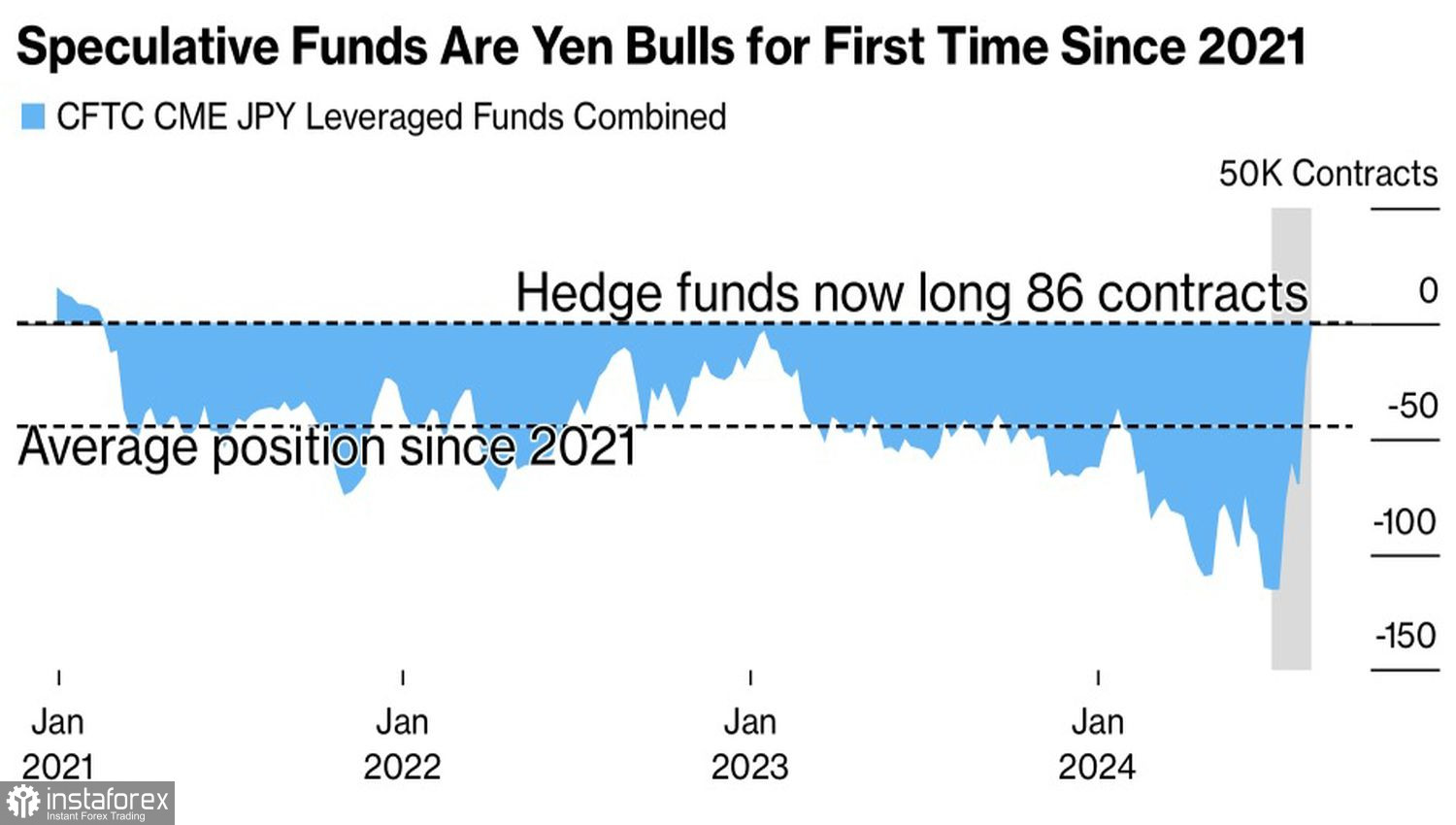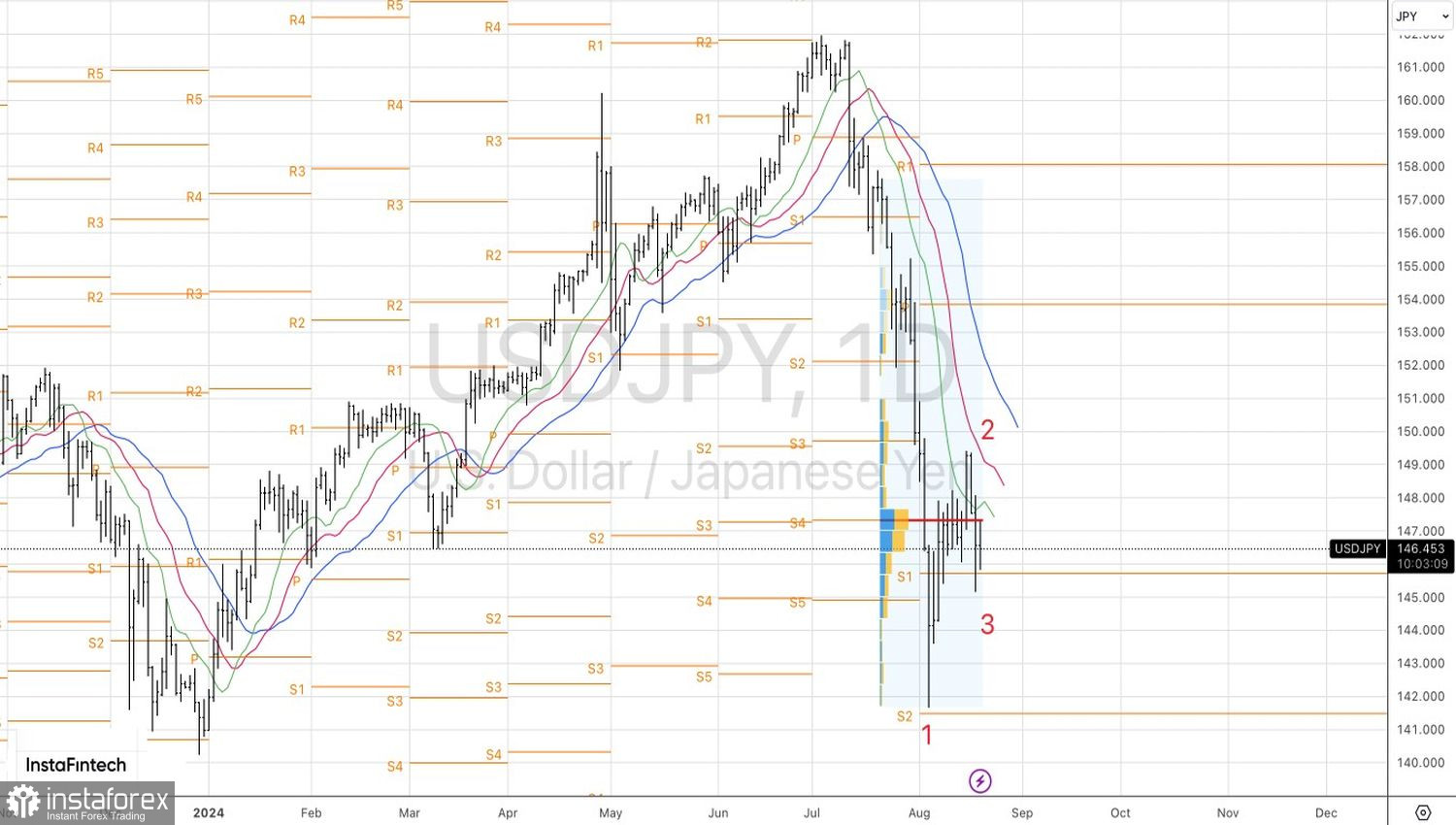In July, the yen became the most effective currency on Forex, strengthening by 7% against the U.S. dollar, and at the peak of Black Monday, its growth hit 12.5%. However, since then, concerns about a U.S. recession and the overnight rate hike by the Bank of Japan have subsided. USD/JPY has entered a consolidation phase, and now, investors are wondering where the pair will head next. Both the bulls and the bears have their own arguments.
For the past three years, the yen has been a clear underperformer on Forex. Just seven weeks ago, hedge funds held short positions in the currency of Japan at their highest levels since 2007. However, by the week ending August 13, they became net buyers of the yen for the first time since March 2021. On paper, this suggests that the unwinding of carry trades might have concluded. The fate of the yen will depend on whether carry traders are willing to return.
Speculative Position Dynamics on the Yen

The improvement in global risk appetite, evidenced by the ongoing rally in U.S. stock indices, the wide yield differentials between U.S. and Japanese bonds, and the slow pace of monetary policy normalization by the BoJ, suggests a gradual return to carry trades and supports the case for buying USD/JPY.
On the other hand, the persistence of high volatility on Forex, partly due to the upcoming September election of Japan's new prime minister and the November U.S. presidential election, creates significant obstacles for carry traders. Adding to this is the narrowing divergence in monetary policy between the Fed and the Bank of Japan, leading Europe's largest asset manager, Amundi, to predict a decline in USD/JPY to the 140 level, the lowest since July 2023.
In reality, the fate of the pair will depend on how quickly the central banks move. If the futures market is correct about a 100 bps cut in the federal funds rate in 2024, the U.S. dollar may be in trouble. If not, the American currency may still perform well. The Bank of Japan's actions are anticipated to be supportive. In the best-case scenario for the yen, it might raise the overnight rate from the current 0.25% one more time this year. In the worst case, it may not raise the rate at all.

Investors may soon receive some clues. Jerome Powell is scheduled to speak at Jackson Hole at the end of the week on August 23, while Kazuo Ueda will speak before the Japanese parliament on the same day. Markets are also awaiting the release of inflation data in Japan for July. If consumer prices, as Bloomberg experts predict, continue to accelerate, the BoJ will have no choice but to further tighten monetary policy.
Technically, on the daily chart, USD/JPY is forming an inside bar. In such conditions, it makes sense to set pending orders to buy the U.S. dollar against the Japanese yen from the 147.3 level and to sell from the support level at the pivot point of 145.7.





















